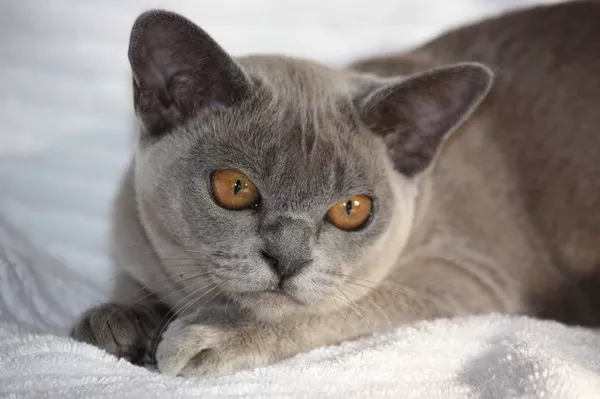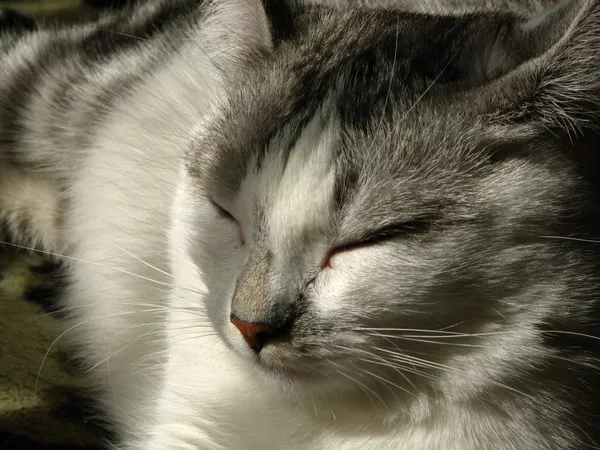Burmese cats are known for their stunning appearance, affectionate nature, and playful personality. One of the fascinating aspects of this breed is their color transformation as they grow. Unlike many other cat breeds, Burmese cats undergo a notable change in their coat color as they mature. This article explores the stages of color change in Burmese cats, the factors influencing this transformation, and what owners can expect during their cat’s development.
Understanding Burmese Cat Coat Colors
Origins and Breed Characteristics
The Burmese cat originated in Burma (now Myanmar) and was brought to the United States in the 1930s. Known for their muscular build, round head, and expressive eyes, Burmese cats have a distinctive appearance. Their coat is short, glossy, and comes in various shades, including sable, champagne, blue, and platinum.
Common Coat Colors
Sable: The traditional and most recognized color, a rich, dark brown.
Champagne: A warm, honey-beige color.
Blue: A soft, medium gray with a silvery sheen.
Platinum: A pale, silvery gray with a fawn undertone.
Genetics of Coat Color
The coat color of Burmese cats is determined by their genetic makeup, particularly the genes responsible for pigment production. The primary gene involved is the Burmese gene (cb), which causes a dilution of the coat color, giving it a unique and lighter appearance compared to the closely related Siamese breed.
Stages of Color Change in Burmese Cats
Newborn Kittens
When Burmese kittens are born, they exhibit a uniform coat color that is significantly lighter than their eventual adult hue. This initial color is often a pale, creamy shade regardless of the final adult color.
Weeks 1-4: Early Development
During the first few weeks of life, the coat begins to darken gradually. The color change starts from the points (ears, nose, paws, and tail) and slowly spreads to the rest of the body. This period marks the beginning of the noticeable transformation.
Months 1-3: Color Intensification
Between one and three months of age, Burmese kittens continue to develop their coat color. The darkening process becomes more pronounced, with the points becoming clearly defined. The overall coat color starts to take on a richer hue, moving closer to the adult color.
Months 3-6: Approaching Final Hue
By the age of six months, the coat color of Burmese kittens has intensified significantly. While not yet at its final shade, the color is much closer to what it will be in adulthood. At this stage, the differentiation between the various coat colors (sable, champagne, blue, and platinum) becomes more apparent.
Beyond 6 Months: Maturation
From six months to a year, the coat color continues to deepen and mature. By the age of one year, most Burmese cats have reached their final adult color, although slight changes and further intensification can occur up to the age of two years.
Adult Coat
In adulthood, the coat color of Burmese cats is fully developed. However, environmental factors, health, and diet can influence the intensity and appearance of the coat throughout the cat’s life.
Factors Influencing Coat Color Change
Genetic Factors
The primary determinant of coat color in Burmese cats is genetics. The Burmese gene (cb) plays a crucial role in the dilution and ultimate color of the coat. This gene is inherited from the parents and dictates the base color and how it changes over time.
Temperature
Temperature significantly affects the coat color of Burmese cats. The enzyme responsible for pigment production is heat-sensitive, leading to darker coloration in cooler areas of the body (ears, nose, paws, and tail). This phenomenon is known as temperature-dependent color change and is also seen in other breeds with similar genetic backgrounds, such as the Siamese.
Health and Nutrition
A cat’s overall health and nutrition can impact the quality and appearance of its coat. Proper nutrition ensures a healthy coat, while deficiencies or health issues can lead to dullness or uneven coloration. Regular veterinary care and a balanced diet are essential for maintaining the coat’s vibrancy.
Environmental Factors
Exposure to sunlight and other environmental factors can influence the appearance of a Burmese cat’s coat. Prolonged sun exposure may cause slight fading, while indoor cats often maintain a more consistent coat color.
Aging
As Burmese cats age, their coat color can change subtly. Older cats may develop a slightly lighter or grayer hue, and some may show signs of graying around the face and other areas.
Caring for a Burmese Cat’s Coat
Regular Grooming
Although Burmese cats have short coats, regular grooming is essential to maintain their glossy appearance. Weekly brushing helps remove loose hair and distribute natural oils, promoting a healthy shine.
Proper Nutrition
Feeding a high-quality, balanced diet supports overall health and a vibrant coat. Diets rich in essential fatty acids, vitamins, and minerals are particularly beneficial for coat health.
Monitoring Health
Regular veterinary check-ups ensure that any health issues affecting the coat are promptly addressed. Conditions like skin infections, allergies, or nutritional deficiencies can impact coat quality and should be managed with professional care.
Environmental Control
Managing the cat’s environment, including limiting excessive sun exposure and maintaining a comfortable living temperature, helps preserve the coat’s color and quality. Providing shaded areas and avoiding drastic temperature changes can be beneficial.
Conclusion: The Journey of Color in Burmese Cats
The color change in Burmese cats is a remarkable process influenced by genetics, temperature, health, and environment. Understanding the stages of color transformation helps owners appreciate the unique beauty of their Burmese cats as they grow. From their initial pale hue at birth to the rich, deep colors of adulthood, Burmese cats undergo a fascinating journey of color development.
Owners can support their cat’s coat health through regular grooming, proper nutrition, and attentive care. By recognizing the factors that influence coat color and addressing any health issues promptly, Burmese cat owners can ensure their pets remain as stunning and vibrant as nature intended.
Whether you are a current owner or considering bringing a Burmese cat into your home, understanding the nuances of their color transformation adds to the appreciation of this extraordinary breed. The dynamic and evolving coat of a Burmese cat is a testament to the intricate interplay of genetics and environmental factors, making each cat truly unique.

![Do Birman Cats Like to Cuddle? [Revealed!]](https://www.catsmeowweb.com/wp-content/uploads/2023/06/burmese-cat-46.webp)
























